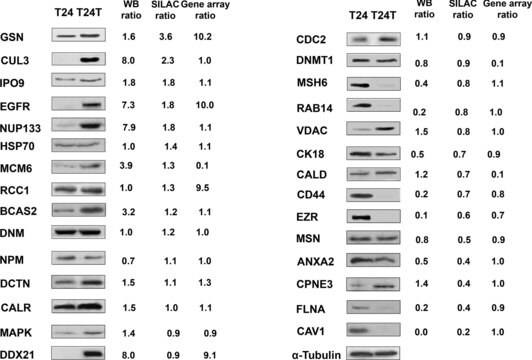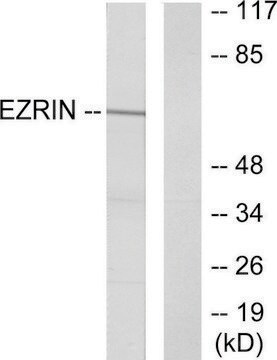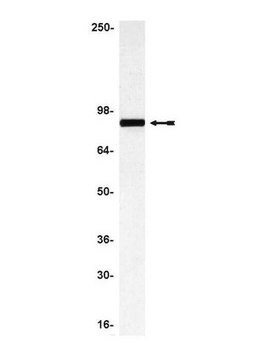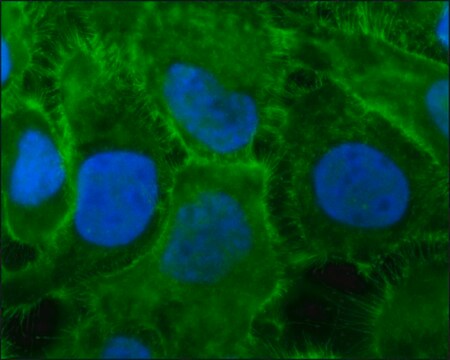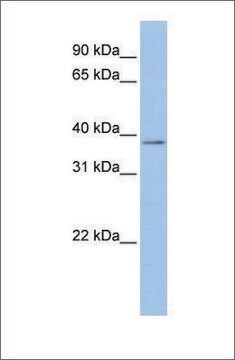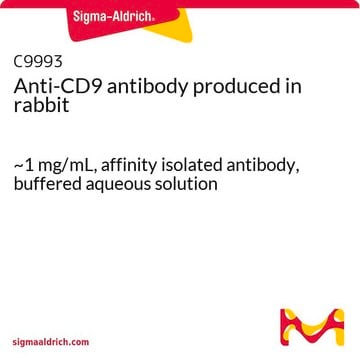SAB4200806
Anti-Ezrin antibody, Mouse monoclonal
clone 3C12, purified from hybridoma cell culture
Synonym(e):
Cytovillin, Villin-2, p81
About This Item
Empfohlene Produkte
Biologische Quelle
mouse
Antikörperform
purified from hybridoma cell culture
Antikörper-Produkttyp
primary antibodies
Klon
3C12, monoclonal
Form
buffered aqueous solution
Mol-Gew.
~80 kDa
Speziesreaktivität
bovine, canine, hamster, kangaroo, human, monkey, rat, mouse
Verpackung
antibody small pack of 25 μL
Konzentration
~1 mg/mL
Methode(n)
immunoblotting: 1-2 μg/mL using using canine MDCK cells extract
immunofluorescence: 0.5-1 μg/mL using human epidermoid carcinoma A431 cells.
Isotyp
IgG1
UniProt-Hinterlegungsnummer
Versandbedingung
dry ice
Lagertemp.
−20°C
Posttranslationale Modifikation Target
unmodified
Angaben zum Gen
mouse ... Ezr(22350)
Allgemeine Beschreibung
The ERM proteins family are involved in the functional expression of membrane proteins on the cell surface, integrate Rho guanosine 5′-triphosphatase (GTPase) signaling regulating cytoskeletal organization and act as protein kinase A (PKA)-anchoring proteins. Therefore, ERM proteins seem to play an important role in the membrane transport of electrolytes by ion channels and transporters.
Immunogen
Anwendung
Physikalische Form
Sonstige Hinweise
Not finding the right product?
Try our Produkt-Auswahlhilfe.
Lagerklassenschlüssel
12 - Non Combustible Liquids
WGK
WGK 1
Analysenzertifikate (COA)
Suchen Sie nach Analysenzertifikate (COA), indem Sie die Lot-/Chargennummer des Produkts eingeben. Lot- und Chargennummern sind auf dem Produktetikett hinter den Wörtern ‘Lot’ oder ‘Batch’ (Lot oder Charge) zu finden.
Besitzen Sie dieses Produkt bereits?
In der Dokumentenbibliothek finden Sie die Dokumentation zu den Produkten, die Sie kürzlich erworben haben.
Unser Team von Wissenschaftlern verfügt über Erfahrung in allen Forschungsbereichen einschließlich Life Science, Materialwissenschaften, chemischer Synthese, Chromatographie, Analytik und vielen mehr..
Setzen Sie sich mit dem technischen Dienst in Verbindung.